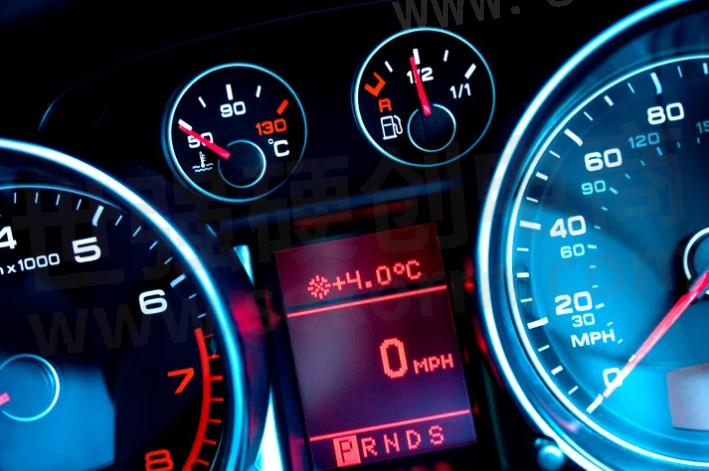7 Places For Electric Car Temperature Sensors In Vehicle Design


LET Amphenol Sensors's TEMPERATURE SENSORS TO WORK IN YOUR EV DESIGN
At first glance, it's hard to tell the difference between an electric car and a vehicle with an internal combustion engine (ICE). Both look alike, and both take consumers from point A to B.
However, they're distinctly different, primarily because of their fuel source.
Despite this major difference, electric vehicles (EV) share another trait with their fossil fuel-powered counterparts: the need for temperature monitoring.
Like an ICE vehicle, excessive heat -- or in more extreme cases, overheating -- can severely impact an EV's functionality and safety, as well as its useful life. Arguably, car temperature sensors play a much broader role in an EV, as many of its components are more sensitive to or perform poorly in sub-optimal temperatures.
A mode of transportation characterized by the latest technology, EVs with robust temperature sensors that provide early warning preserves performance by making sure its systems are working properly.
7 PLACES TO INTEGRATE ELECTRIC CAR TEMPERATURE SENSORS INTO DESIGN
Car temperature sensors are a key component of EV design -- on par with those that monitor battery power. When it comes to monitoring temperatures throughout the vehicle, there are seven places where sensors are a necessity:
1. Motor
2. Battery
3. Inverter
4. Charger handle, port, and high voltage connectors
5. Thermal management system
6. Passenger cabin
7. Under the hood
1. MOTOR
EV motors are no different than engines of an internal combustion engine (ICE) vehicle -- they have a lot of different components working seamlessly together. And more importantly, they get hot when in use.
Like an ICE engine, an EV motor needs to be kept within a certain temperature range to run efficiently -- between 90-95 ℃. Going beyond that range in an EV causes overheating, during which the engine may run inefficiently or enter safe mode.
Install electric vehicle temperature sensors to monitor:
● Electric motor oil temperature
● Electric motor winding temperature
● Electric motor coolant temperature
Electric motor temperature control isn't strictly about keeping temperatures down. In colder climates, motor temperatures need to be brought up to around 15 ℃ before driving for efficient operation.
2. BATTERY
The heart of an electric car is its battery. Without it, travel is impossible.
During operation and recharging, electric car battery temperatures rise, usually between 45-55 ℃. Excessive heat beyond a battery's comfort zone of 10-45 ℃ has negative effects on battery aging.
Additional heat stress on the battery may:
● Shorten its lifespan
● Reduce its charging capacity
● Start thermal runaway
Like an EV's motor, cold weather also impacts electric car battery performance. Temperatures lower than 10 ℃ make it difficult for the battery to:
● Hold a charge
● Maintain range
● Power efficiently
3. INVERTER
As the channel through which DC energy is converted to AC to power the motor, inverters control the lifeblood of an electric vehicle. A byproduct of that conversion of current is heat, which when unchecked, can far exceed the optimal temperature limit of 150 ℃. When exposed to excessive heat for too long, the interior components start to fail and the device won't function properly.
Common effects of overheating on inverters include:
● Insulation degradation
● Solder cracking
● Metal warping
4. CHARGER HANDLE & PORT
As the source of an EV's power, the EV charger's handle and charging port can overheat too. High temperatures are indicative of a few issues:
● Poor connection
● Charger malfunction
Monitoring temperatures of an EV's charging handle and its port will become increasingly important as fast DC charging technology evolves. Though fast-charge technology has brought re-energizing times down to ~30 minutes for 80% power, consumers are seeking a refueling experience similar to filling a gas tank today.
Fast charging requires converting a large amount of power, which generates a large amount of heat. As the technology improves for quicker recharging times, monitoring temperatures helps ensure the process is safe and efficient.
5. THERMAL MANAGEMENT SYSTEM
While the base function of a thermal management system is to regulate an EV's mechanical components and battery, the system itself needs monitoring too.
A thermal management system's temperatures directly impact the EV components it's supposed to cool. When its temperatures spike beyond normal ranges, a domino effect may happen, causing many of the same issues previously listed. Critical information to system controllers to optimize performance and minimize power consumption while maintaining appropriate system temperatures with temperature sensors monitoring critical points in both coolant and refrigerant systems.
High temperatures within a thermal management system are a sure sign that something's wrong, be it a malfunction inside the system -- such as a leak -- or a failure in one of the components it's cooling.
6. PASSENGER CABIN
A vehicle that's too hot or cold makes for a long, uncomfortable ride. Besides its motor, an electric vehicle's HVAC system is the next-most noticeable thing running while an EV is on.
The cornerstone of an electric vehicle's functionality is efficiency -- or making sure it uses no more power than absolutely necessary. Electric vehicle sensors tell the car and computer exactly how hard the vehicle's systems need to work.
With in-cabin electric vehicle HVAC system temperature sensors, drivers and passengers stay comfortable without draining the battery too quickly and reducing its range.
7. UNDER THE HOOD
Exterior temperature sensors aren't about giving drivers and passengers an idea of the climate they're stepping into.
Like an in-cabin HVAC temperature sensor, an external device tells the vehicle how hard some of its other systems, such as the thermal management system, have to work to overcome environmental temperatures. Outside temperature sensors are typically installed under the hood of a car or truck.
ELECTRIC CAR TEMPERATURE SENSORS FOR OPTIMAL VEHICLE FUNCTION
Regardless of fuel source, car temperature sensors are nothing new in vehicles.
Given the nature of how EVs and their components depend on working in an optimal environment, integrating temperature sensors into vehicle design at the right spots is critical. With temperature sensors helping to maintain an EV's performance, the adoption and acceptance of electric vehicles become easier as electric cars and trucks feel and perform better than ICE vehicles for a fraction of the fuel cost.
- +1 Like
- Add to Favorites
Recommend
- Amphenol Sensors Electric Car Battery Packs-A New Power Source
- Developing Optimized Sensors with Software for Electric Vehicles
- InvenSense Announces SensorStudio 2.3 Supporting Dataflow-Based Custom Sensors
- Find Your Solutions from Wide Lineup of Temperature Sensors for Industrial Machinery— Slim, Compact Temperature Sensors for Motors
- Optimizing Fast Charging with Electric Vehicle Sensors
- Electromagnetic compatibility for Electric Vehicle Sensors
- Secure Your Electric Future: Introducing Johnson Electric‘s EV Locking Actuator Built for Reliability and Durability
- Sensors Improve The Energy Efficiency And Environmental Performance of Central Air Conditioners through Precise Temperature, Humidity, Pressure, and Current Measurement
This document is provided by Sekorm Platform for VIP exclusive service. The copyright is owned by Sekorm. Without authorization, any medias, websites or individual are not allowed to reprint. When authorizing the reprint, the link of www.sekorm.com must be indicated.





























































































































































































































































































































































































































































































































































































































































































































































































































































































